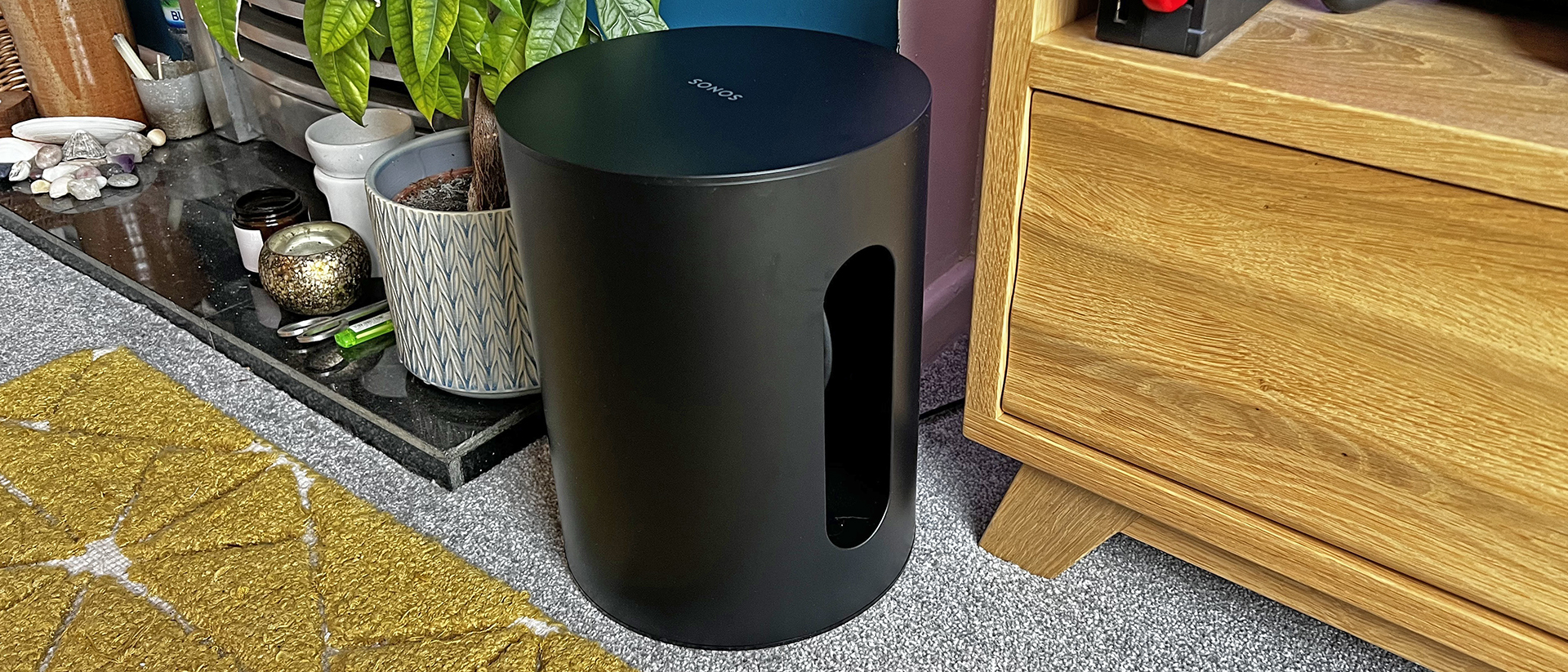TechRadar Verdict
The Sonos Sub Mini is a valuable addition for Sonos Arc users with limited space, and is a just-about justifiable purchase for the Sonos Beam at its price. It adds a lot to the Sonos Ray too, but it's harder to recommend in terms of value.
Pros
- +
Adds deeper bass to all Sonos soundbars
- +
Pleasing, compact design
- +
Force-cancelling driver system
Cons
- -
A bit subtle out of the box
- -
Price hard to justify for cheaper soundbars
Why you can trust TechRadar
Sonos Sub Mini: One-minute review
The Sonos Sub Mini is the long-awaited smaller and cheaper subwoofer from Sonos that's designed to pair with its soundbars, to bring deeper bass and a better home theater experience.
The Sonos Sub Mini offers a crucial alternative to the existing Sonos Sub, which is a big and beefy beast that's only suitable for larger rooms and bigger setups… and if you don't have neighbors in close quarters.
The Sub Mini is smaller and, obviously, less powerful, but we found that when testing it even with the large Sonos Arc it adds an important bass foundation that really elevates the experience. Its sound is composed, precise and rich, though we do recommend using the Sonos app to increase the Sub level to +4 or +5, because it's a bit on the reserved side out of the box.
Paired with the smaller Sonos Beam 2nd Gen, it again much improves the depth and sustain of bass; however it also doubles the cost. If you want the most expansive-feeling system possible in the smallest space, it's a good buy; otherwise, alternative options (such as the Samsung HW-Q930B) offer better value.
It makes the most dramatic improvement to the listening experience when teamed with the cheaper Sonos Ray, but it's just too expensive to truly justify for a budget soundbar, unless you have some very specific setup needs.
Sonos Sub Mini review: Price and release date
- $429 / £429 / AU$699
- Released on October 6, 2022
The price of the Sonos Sub Mini is pleasingly – and, crucially – lower than the $699 / £649 / $1,099 of the full-size Sonos Sub. It's not cheap – and, we'd argue, perhaps still just a little too expensive, in the context of the price of the two soundbars Sonos recommends pairing it with.
Sonos says it's the ideal partner to the Sonos Ray and Sonos Beam 2nd Gen, but is officially gently steering people away from using it with the Sonos Arc, even though (as we'll come to), it works great with that model too.
But the Sonos Ray costs $279 / £279 / AU$399 – I'm struggling to imagine people spending an additional $430 to add some bass extension to a cheap and cheerful soundbar that doesn't even include Dolby Atmos or HDMI support.
As alluded to above, I can see the case more with the Sonos Beam 2nd Gen, which costs $449 / £449 / AU$599. You're still nearly doubling the cost to add the Sub Mini, but if you simply can't have a larger soundbar than this, then it's probably the best option out there.
To be a more tempting pairing with these soundbars it probably needed to cost closer to $300 / £300, but that's not the case. However, there can sometimes be Sonos promo codes to bring the price down a little.
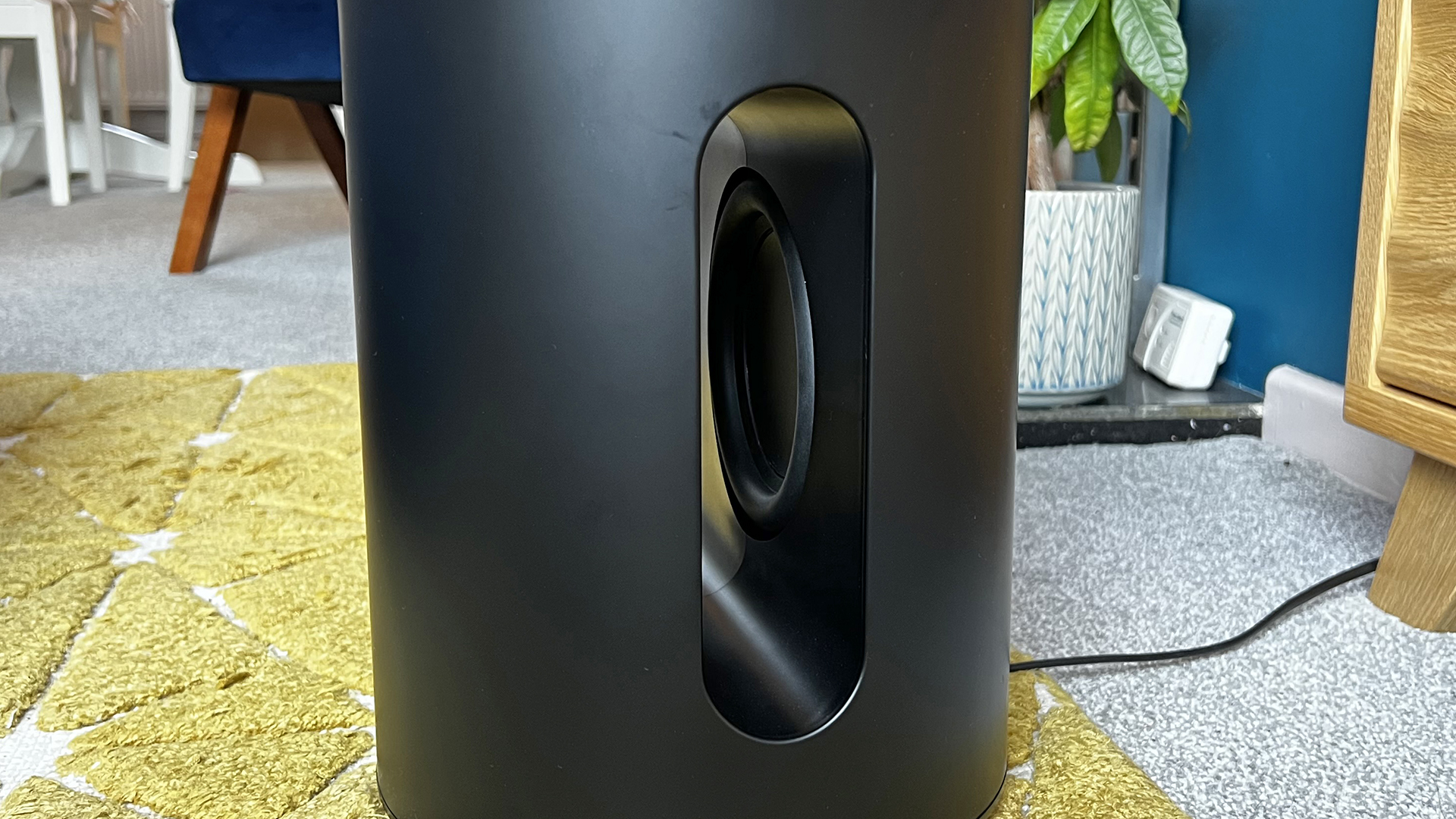
Sonos Sub Mini review: Features and design
- Frequency range down to 25Hz
- Force-cancelling six-inch drivers
- Tidy cylindrical design
There aren't a lot of features in the Sonos Sub Mini – it's just a subwoofer, after all! As you'd expect, it works wirelessly over Wi-Fi, and uses a fast and low-latency 5GHz connection to ensure it's as synced with your soundbar as possible, but there's also an Ethernet port for wired connectivity.
It works with the Ray, Beam and Arc soundbars, but could also be used with a pair of Sonos One speakers to beef up a stereo system, or even with a pair of Sonos Five speakers, though Sonos says that's less recommended because they have strong bass already. It'll also work with bookshelf speakers connected to a Sonos Amp, but it doesn't work with the Sonos Port, Sonos Move or Sonos Roam.
The main thing to know about the Sub Mini is its driver configuration. It features two six-inch woofers, which offer frequency response reaching down to 25Hz, according to Sonos' figures.
The two drivers face towards each other at the center of the speaker, with the bass they produce then diffusing out of the oval ports on each side of the Sub Mini. This configuration is called a 'force-cancelling' setup, and is often used in more advanced speaker systems where you want a good amount of power in a small space.
The science is this: any loudspeaker driver that uses vibrations to push air in one direction (i.e., the sound you want) will also produce 'waste' vibrations in the opposite direction, because every action has an equal and opposite reaction. Left unchecked, these waste vibrations can cause unwanted sound of their own, or can cause the body of a speaker to vibrate, none of which we want.
Very large speakers will often absorb these waste vibrations through sheer brute force – they'll be made from very thick, very heavy material that can simply take the shake. But a small speaker like the Sonos Sub Mini can't, because it just isn't big (or heavy) enough – and good bass requires especially aggressive movement from a speaker driver.
Force cancellation is an alternative option, and it's what Sonos is using in the Sub Mini. Here, you have two identical speakers facing in precisely opposite directions, and they play the exact same sound in sync. Remember I said that the issue is that a speaker firing forward produces reactionary vibrations backwards? Well, if you also have a speaker firing backwards that products a reactionary vibration going forwards, then you've actually balanced the reactionary vibrations. It's like two people pushing a door from opposite sides at the same time – nothing happens. The unwanted vibrations cancel each other out, and you're only left with the useful air movement that you actually want.
And it's very effective in our experience – it means the Sub Mini leaks minimal vibrations outside of the subwoofer itself. Huge bass won't rattle the walls, or travel through to next door (unless you really crank up the volume) – the subwoofer itself feels basically still even when in use.
The cylindrical design helps here too (circular units absorb vibrations better than squared-off designed), and they give the Sonos Sub Mini a smart-looking design overall. It's a bit prone to finger smudges, but you won't be moving it around as often as I was when doing all my testing, so you probably won't mind.
It comes in black or white to match your other Sonos gear, and one nice touch is that the oval cut-out in the sides is the same proportions as the Sonos Beam when viewed from above, or the Sonos Ray when viewed from the front.
There is one major missing feature that's a shame, though: you can only connect one Sonos Sub Mini to a system. The original Sonos Sub supports two subwoofers in a single system, so you could potentially have a 5.2.2 setup connected to one TV for big-bass lovers.
Low frequencies travel the shortest distance of any sound waves, so having the option of two Sub Minis distributing bass evenly in a larger room where a big subwoofer isn't welcome would have been a nice option – in fact, the new cheaper Sennheiser Ambeo soundbar's subwoofer system is totally designed around this. I hope Sonos changes this with an update in the future.
- Features and design score: 4/5
Sonos Sub Mini review: Sound quality
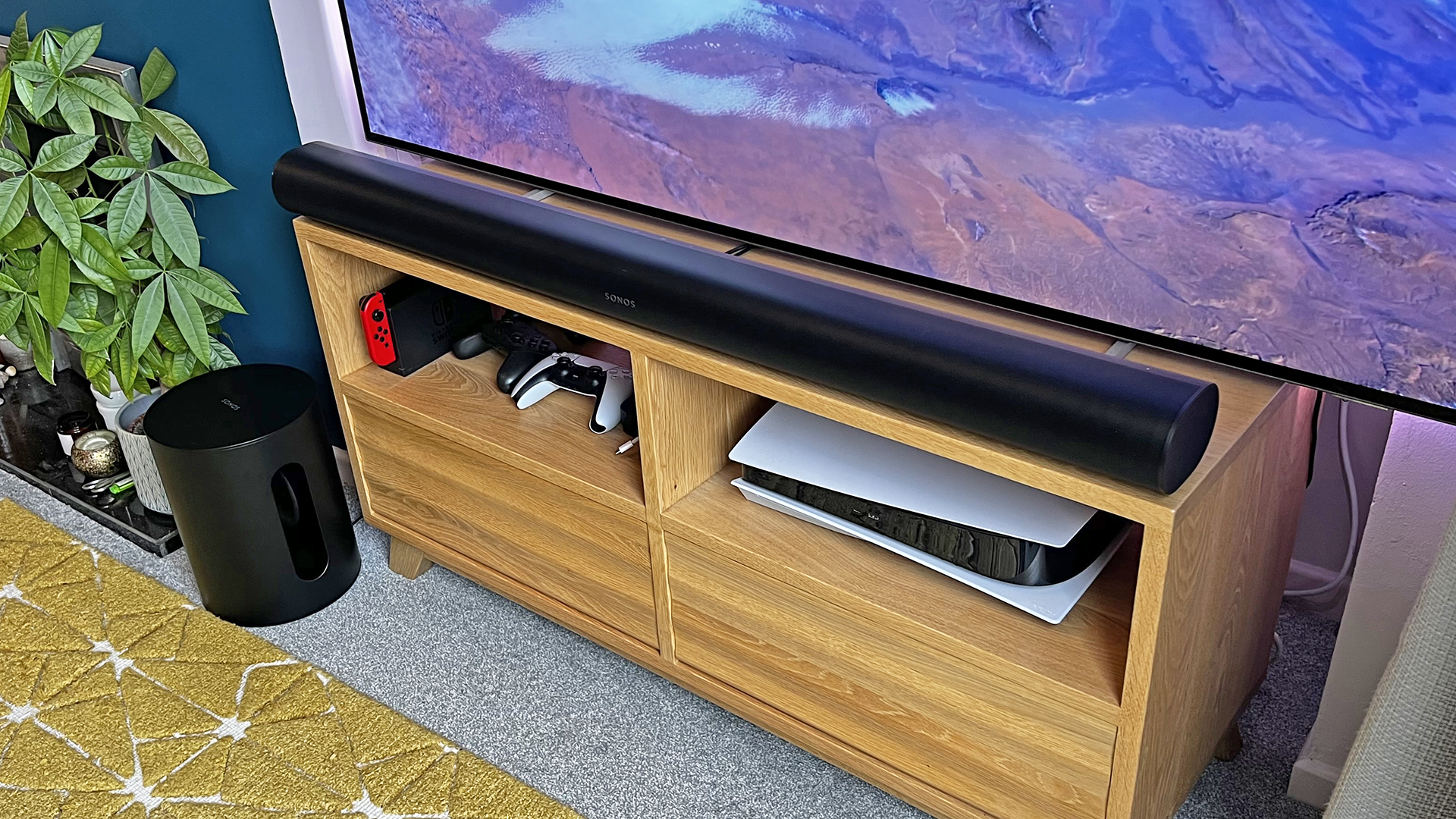
- Rich, sustained, diffused bass
- Adds more depth to all Sonos soundbars
- Needs a bit of extra kick out of the box
If what you want from the Sonos Sub Mini is a richer, deeper underpinning to the home theater sound from your Sonos soundbars, but without it being in-your-face or extreme, the Sub Mini is a good fit.
Its sound is not big – in fact, out of the box I'd say it's a little too restrained and polite – but it offers a level of bass extension that none of the Sonos soundbars can match on their own, so there's no question it offers a real improvement for them all.
And the Sonos Sub Mini also integrates its frequency range seamlessly with all three soundbars, even though they each have different low-end capabilities – in all cases, you won't be able to hear the Sub Mini click in and out of working. The bar and sub will simply combine into one big soundstage.
In all cases, what it adds is the deeper bass down to 25Hz, so you get those low, powerful frequencies that are simply missing without a sub. This also means it adds resonance to the bass that's simply missing from all three soundbars – in all cases, they roll bass off to nothing very quickly, but the sub can keep the lowest frequencies rumbling in your ears and throat, which adds more realism to scenes ranging from explosions to crashing waves to acoustic instruments being played.
And while doing this, it also releases the bass from the soundbar. Ideally, low frequencies should be directionless, and just act as a foundation for the rest of the sound. The Sonos Ray and Beam in particular feel like the bass is powering from the small bar unit; the Arc is a little better, but still feels constrained. The Sub Mini feels like it's just coating the whole area.
In Top Gun: Maverick, when Tom Cruise flies his Mach 10 plane over Ed Harris near the start, at first there's a roar of engines as he takes off, then there's a shockwave that blasts through the screen. With the soundbars alone, there's just a light punchy boom; with the Sub Mini, the roar of take-off has actual weight and power, and feels like a beast of an engine has fired. And then the shockwave has more thump, but most important it lasts a second longer in the lowest frequencies – it feels more like how it would affect the real world, not just images on a screen.
In Star Wars: The Last Jedi, when Snoke's ship is picking off escape shuttles, the Sub Mini means that lasers strike and explode with depth and menace, rather than just popping the ships. And in Avengers: Endgame, Thanos hitting Cap's shield creates a deep ringing noise that lasts longer and delivers much more of a sense of impact.
But to get all these to a level where I was happiest with the added effect of the bass, I used the Sonos app to dial the Sub's output up to +5. Straight out of the box, it still made a difference, but it's much more subtle.
If you've gone to the trouble of adding a subwoofer to your setup, you're probably hoping for a pretty stand-out effect. For me, +5 added that, but without making the sound feel overly bassy in any way, or making me worry that it would travel through to the neighbors' house.
Now, let's talk about how well it works with individual soundbars. With the Sonos Ray, it not only adds bass, but also helps to relax the sound of the Ray in other parts of the sound. Without the pressure of trying to handle all the bass itself, the Ray's mid-range feels more free and natural, so the Sub Mini makes the biggest difference to this soundbar. But as I've mentioned elsewhere, I still don't think you should spend $449 on achieving this.
Used with the Sonos Beam and Sonos Arc, it doesn't make a big difference to the overall soundstage that I identified, but it does just deliver that deeper, richer rumble that those soundbars simply can't manage on their own.
- Sound quality score: 4/5
Sonos Sub Mini review: Setup and app
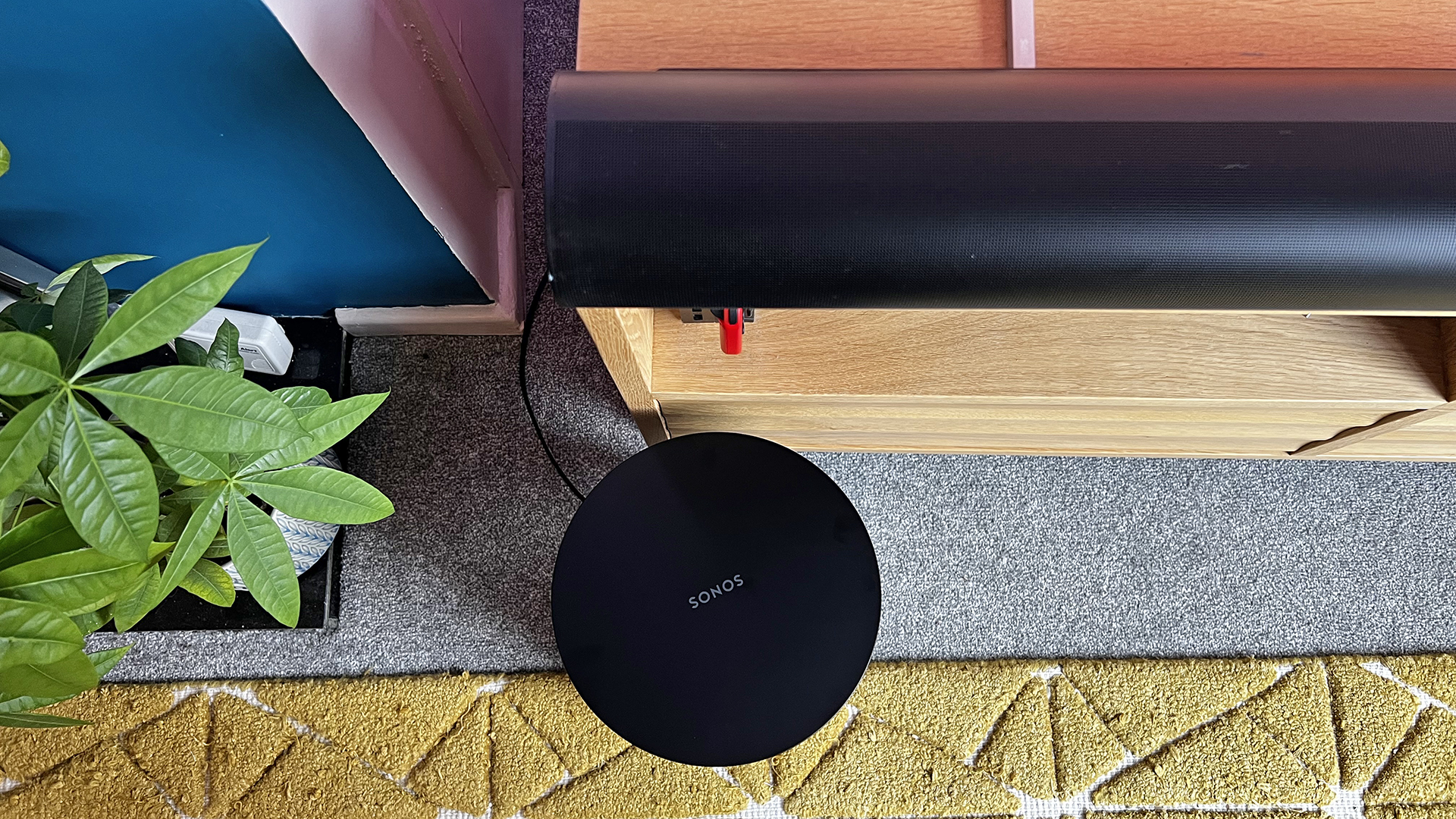
- Easy to set up and add to a system
- Slightly fiddly to find adjustment options in the app
Setting up the Sonos Sub Mini is as easy as any other Sonos speaker. Plug it in, fire up the Sonos app, ask to add a new device, and follow the instructions. There's a spot on top with an NFC chip that's used to speed things up further, but the on-screen guide will talk you through this.
It will then ask which Sonos speaker from your home you want to pair the Sub Mini with, and then you're good. It's a couple of minutes in total.
Mercifully for me, testing this with three different soundbars, Sonos also made it easy to switch the Sub between different rooms – you just remove it from one room, and then the app will suggest a different room that has a speaker in it, and then handles the rest.
If you want to make tweaks, this is where the Sonos app gets a little confusing. You go to your devices, then you choose a setup (such as Sonos Beam + Sub). That takes you to another screen, and here you'll have multiple different places where you can make Sub Mini settings changes. Look for Sub Audio – here you can slide the amount of bass up and down (to achieve the +4 or +5 I recommend), or even turn the Sub Mini off temporarily. You can flick it back on later.
- Setup and app score: 4/5
Sonos Sub Mini review: Value
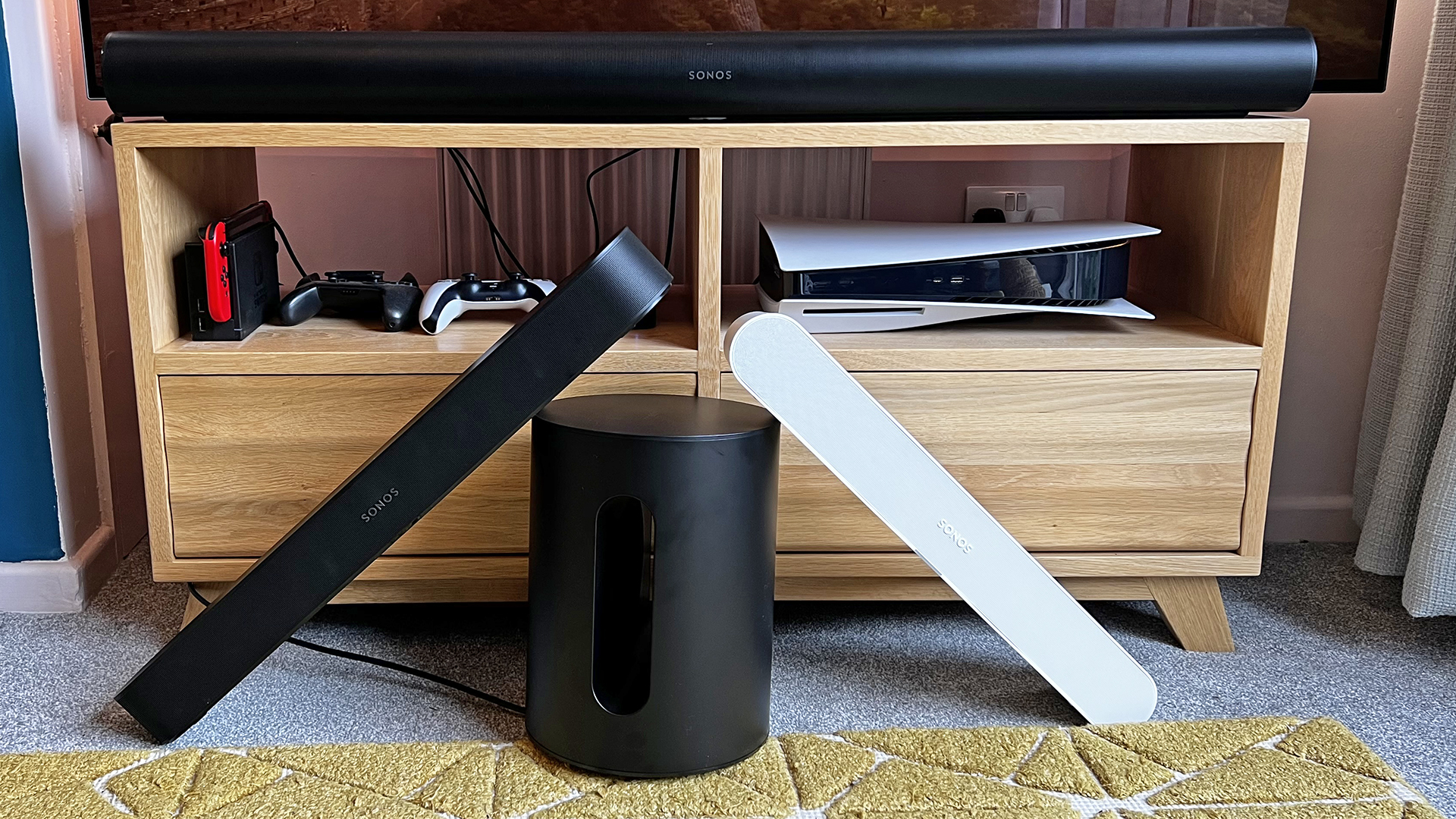
- Great for Sonos Arc
- Good for Sonos Beam if space is limited
- Not worth it for Sonos Ray
As I've discussed, the Sub Mini's value depends partly on what you're thinking of pairing it with. Purely as a high-quality subwoofer, I think its price is perfectly fair for how controlled and high-quality it is.
But it doesn't exist on its own. It's really made for pairing with one of three subwoofers, and it's a very tough sell for one, a fairly tough sell for the second, and solid add-on for the last.
With the Sonos Ray, it's simply too much to pay for the extra bass extension and audio improvements it brings. You should get a different soundbar setup if you're thinking of spending that kind of combined money and want real bass. Look to the Yamaha SR-C30A, for example.
With the Sonos Beam, the combined cost is too high when compared to a package like the Samsung HW-Q930B that offers so much more. However, all of those packages would be much larger soundbars. If you're in super-limited space, the Beam and Sub Mini combo is probably the best-sounding option you can get, so it can justify the price here in some cases.
With the Sonos Arc, I will just straight-up recommend it if you already have the soundbar and would like a better soundstage overall. As a long-time Arc user, it fills exactly the hole I wanted it to, and for a price I think is reasonable.
- Value score: 3/5
Should you buy the Sonos Sub Mini?
| Attributes | Notes | Rating |
|---|---|---|
| Features & design | Great force-cancelling design, shame you can only have one unit. | 4/5 |
| Sound quality | Deep, controlled and rich bass. You might want to boost it out of the box, though. | 4/5 |
| Setup & app | Very easy to get up and running. Settings are a little fiddly to find. | 4/5 |
| Value | Too much for Ray; maybe good for Beam; great for Arc. | 3/5 |
Buy it if…
You have a Sonos Arc and a medium-size room
It completes the sound profile of the Arc without the size, and the expensive and un-needed power, of the big Sonos Sub in a medium home.
You have a Sonos Beam and very limited space
It's an expensive combo with the Beam, it you simply can't go any bigger, they're the best sounding 1-2 punch at the size.
Don't buy it if…
If you have a Sonos Ray
The Sub Mini makes the most difference to the Ray, but it's total overkill for a soundbar that's supposed to be cheap and cheerful.
You have a big viewing room
It's not designed for large space, and you can't have more than one to distribute the sound. You'll want the full-size Sonos Sub for big rooms.

Matt is TechRadar's Managing Editor for Entertainment, meaning he's in charge of persuading our team of writers and reviewers to watch the latest TV shows and movies on gorgeous TVs and listen to fantastic speakers and headphones. It's a tough task, as you can imagine. Matt has over a decade of experience in tech publishing, and previously ran the TV & audio coverage for our colleagues at T3.com, and before that he edited T3 magazine. During his career, he's also contributed to places as varied as Creative Bloq, PC Gamer, PetsRadar, MacLife, and Edge. TV and movie nerdism is his speciality, and he goes to the cinema three times a week. He's always happy to explain the virtues of Dolby Vision over a drink, but he might need to use props, like he's explaining the offside rule.
